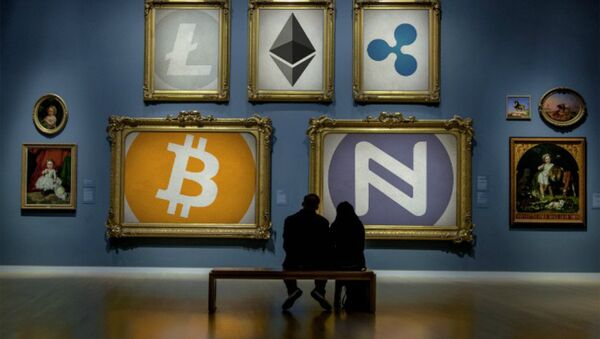One area has remained resolutely resistant to the burgeoning cryptocurrency craze — the art world. Eleesa Dadiani, the founder and owner of Dadiani Fine Art, is determined to change that.
Her gallery, based in Mayfair, London in June became the world's first to accept Bitcoin — although other leading cryptocurrencies such as Ethereum, Ethereum Classic, Dash, Litecoin and Monero are also accepted. What's more, Ms. Dadiani — "an absolute evangelist" when it comes to cryptocurrencies — aims to launch her very own, the Dadicoin, before 2017 is over.
"This was in no way a demand-driven decision — there was no one calling for galleries to accept cryptocurrencies, as far as I'm aware. I wanted to make a point, that this is the way our economies are headed — soon paying by cryptocurrency will be as common as paying by cash or card. Fine art, which is a traditionalist sphere, seemed like an ideal gambit. I'm demonstrating the virtual world and "old" world can be bridged, and how," Ms. Dadiani told Sputnik.
Cryptocurrencies are often erroneously associated exclusively with the purchase of illicit wares on the dark web. However, these fledgling tenders — in particular cryptocurrency leader Bitcoin — are accepted by an ever-rising number of merchants, and not merely internet operations either.
Bricks and mortar stores the world over do too, with Bitcoin alone accepted by over 100,000 stores internationally, allowing cryptoconsumers to purchase everything from consumer staples such as beer and sandwiches to funeral services and yachts.
The international nature of the art market — and the pressing need for extremely safe money transfers — arguably makes it an ideal candidate for cryptocurrencies. Cryptocurrencies are underpinned by "blockchain" — a digital record of transactions distributed across, and verified by, thousands of computers in a network. Once the network reaches a consensus a transaction has happened, the ledger is updated and cannot be tampered with. In an increasingly borderless world, Ms. Dadiani feels blockchain is the perfect payment mechanism today — an open source, peer-to-peer network governments cannot tamper with, that allows totally free trading between businesses anywhere in the word.
This is particularly vital for emergent blocs with disparate geographical positions, such as BRICS, a key target audience for Ms. Dadiani's efforts. Moreover, cryptocurrencies drastically reduce reliance on brokers and other intermediaries, meaning fine art prices will become that bit more affordable.
Drawing No Crowds
These evident strengths collectively beg the question of why there is no apparent clamor for the wider embrace of cryptocurrencies in the art sphere. There is but one prior example of cryptocurrencies and the arts intersecting commercially, with Austrian Museum of Applied Arts/Contemporary Art becoming the world's first museum to purchase pieces using Bitcoins — and renowned auction house Sotheby's has made clear it has no plans to buy or sell via cryptocurrency in future.
What accounts for this sluggishness at best, and reticence at worst?
"The biggest challenge is convincing people to do things differently, definitely. I've been very surprised at how rigid some people are when it comes to trading — traditional luxury sectors feel they have a lot to protect, and wish to preserve their elitist, exclusive clientele. I want the opposite — to open up the market to many new investors, all over the world," she explains.
However, it is precisely the lack of a central body that makes cryptocurrencies such a dynamic prospect, Ms. Dadiani believes — their futures are not determined by a stuffy head office, a structure that has in fact helped cause or exacerbate many of the world's economic problems.
"Just look at the euro — it's a sham! The current money model is growing quickly out of date, and is ready for disruption. When Bitcoin launched, it was the subject of ridicule. Now, many traditional businesses are taking it very seriously. That old, established institutions like art galleries are taking it seriously too sends a clear signal this is a very important technology," she says.




